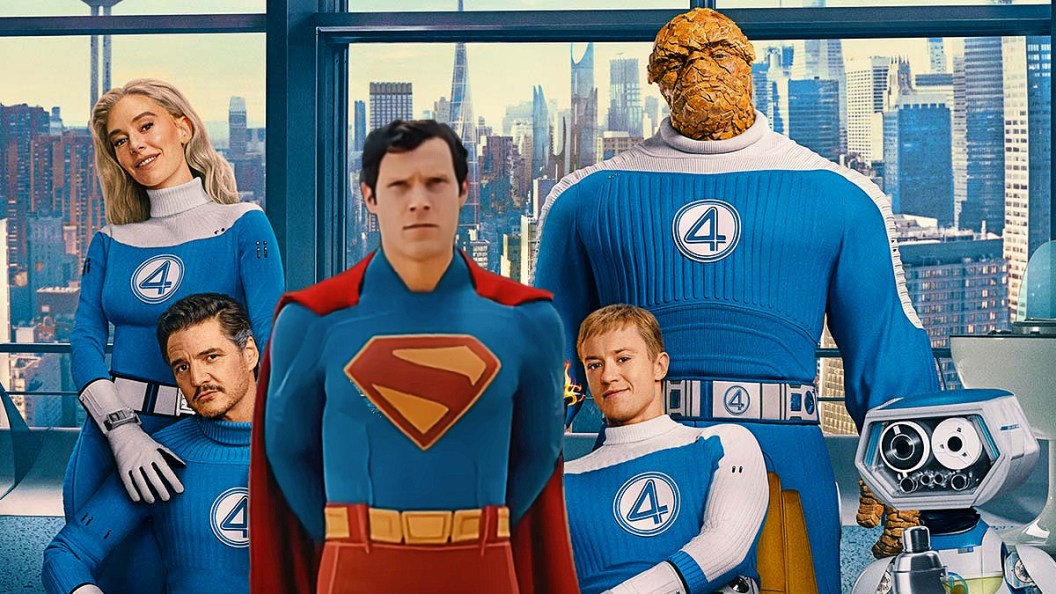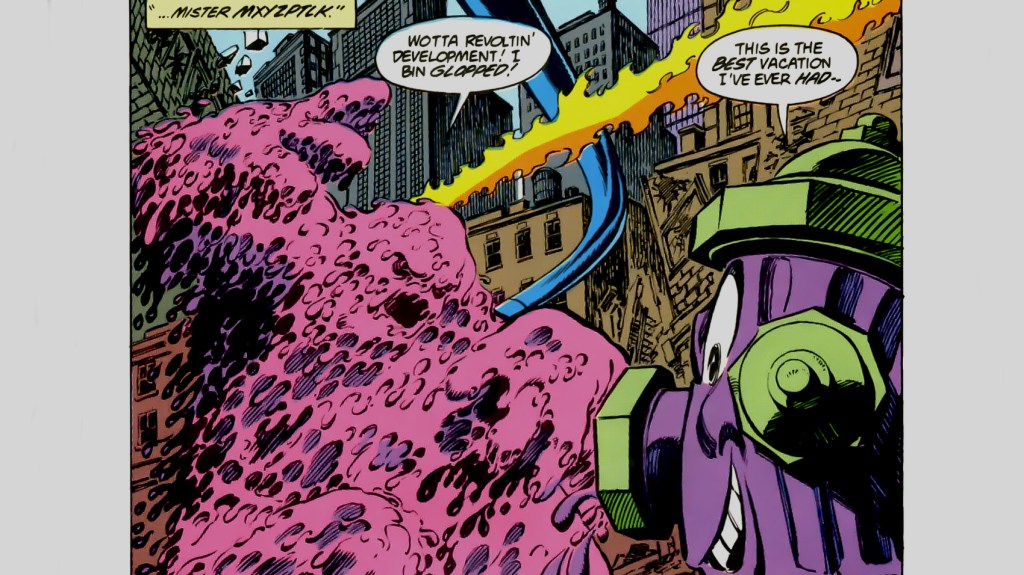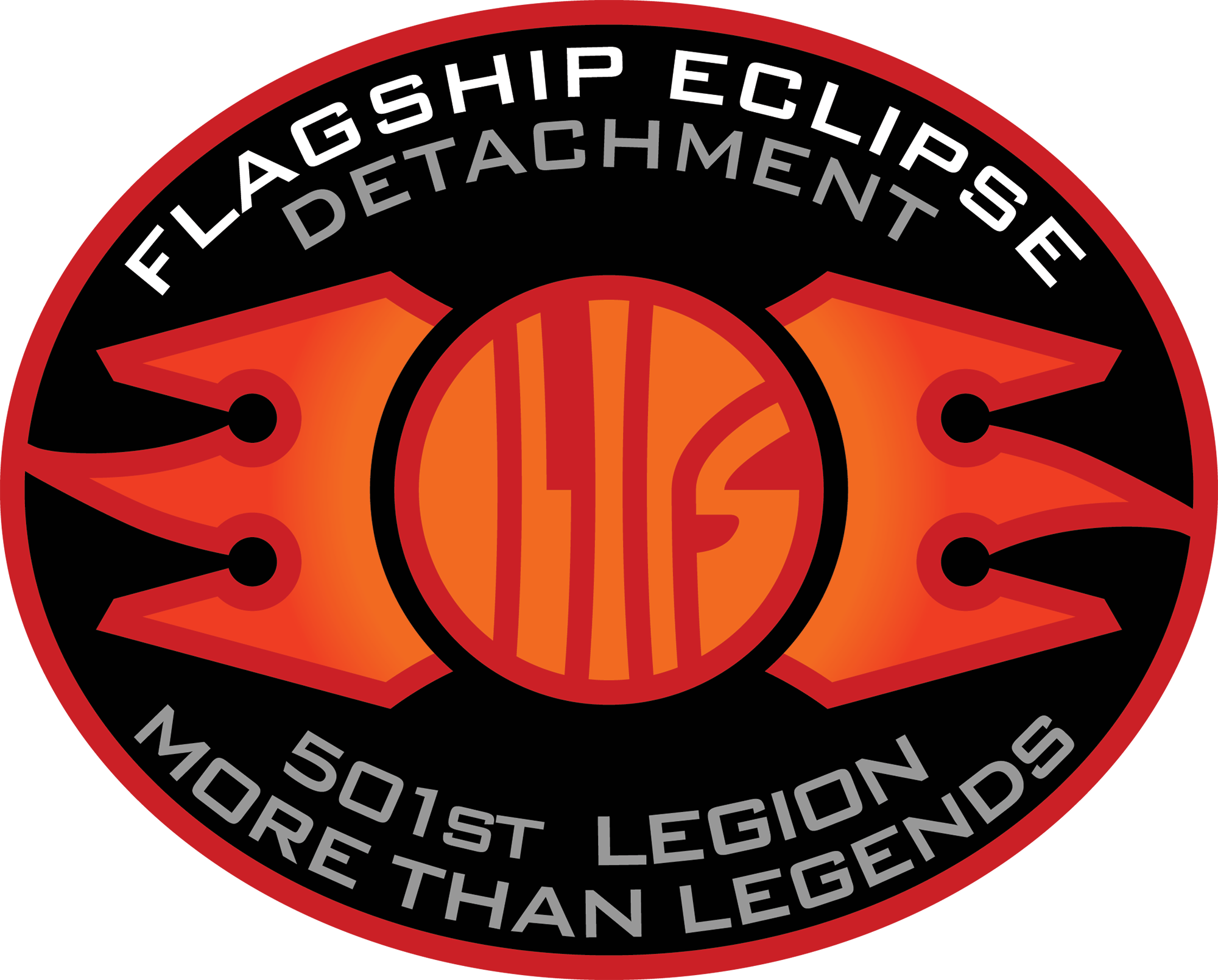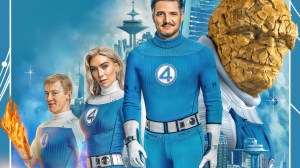
Easter eggs have a long and rich history in the DC and Marvel comic universes — and for good reason. Superhero comic books are among the most Easter egg–friendly storytelling mediums available. By their very nature, comics make it easy for writers and artists to embed subtle visual or narrative clues, and for observant readers to spot and decode them. Moreover, the DC and Marvel comic universes boast decades of interconnected lore and mythology, providing an ample pool of references for creators to weave into their comic books. Both publishers also boast passionate and well-informed fan bases who thrive on the challenge of finding a well-placed hidden reference.
While Easter eggs often serve as tributes, homages, or hype, they can also be used to parody and poke fun at the numerous tropes found in the superhero comic book genre. In a notable example, DC playfully flipped this special use Easter egg on its head in a decades-long rivalry with Marvel, delivering a cheeky jab at the “First Family” that might have flown under some fans’ radar.
DC vs. Marvel and the Rivalry’s Funniest Moment

Superman (1987) #49-50, at first glance, appears to have no connection to Marvel Comics. However, these issues are quite significant within the DC Comics Universe. They provide a detailed explanation of Krimson Kryptonite, one of the mineral’s more bizarre and dangerous manifestations, particularly when it falls into the wrong hands. The perilous nature of Krimson Kryptonite is directly linked to Superman’s ancient foe and all-around interdimensional cosmic jester, Mr. Mxyzptlk. Issue #49 reveals that Mxyzptlk “gifts” a piece of this Kryptonite to Lex Luthor. Yet, he’s too “busy having fun in another dimension” to fully explain its implications, thereby missing his “quarterly appointment” to torment the Man of Steel.
In Issue #50, we learn more about the fun Mxyzptlk is having in another dimension — a distraction that keeps him from one of his most important and long-standing commitments. As it turns out, the dimension Mxyzptlk is in is the Marvel Universe’s Earth-616 and the “fun” he can’t tear himself away from involves watching Marvel’s Fantastic Four get beaten up by a supervillain, just out of the viewers’ sight. As Mxyzptlk confesses, “This is the best vacation I’ve ever had.” DC did everything it could to punk Marvel in the scene — but, true to Easter egg tradition, the jab was hidden and “findable” only by diehard Fantastic Four fans who happened to be reading a Superman comic.
While the Fantastic Four are not named directly in the scene, eagle-eyed followers of Marvel’s “First Family” would immediately recognize them. First, there’s the trademark blue uniform and elongated features of Reed Richards as Mr. Fantastic. Second, there are the telltale fire trails of Johnny Storm’s Human Torch. Hard to identify but nevertheless recognizable is the hulking body of Ben Grimm’s Thing, which has just been blasted with a pink slimy substance, seemingly to obscure any pretense of who writer Jerry Ordway is describing.
Indeed, his manner of speech, however, gives him away as it perfectly replicates Ben Grimm’s distinctive vernacular. While Sue Storm’s Invisible Girl is not present in the scene, the background, notably the two smashed buildings, has a very Jack Kirby-esque vibe that mirrors the early years of the Fantastic Four’s original publication run. And if that weren’t enough to convince you, Mxyzptlk’s statement about “having fun with my fantastic new friends” certainly should.
The Legacy of Mr. Mxyzptlk’s Visit to the Marvel-verse

While it’s hard to pinpoint who fired the first shot —or when— it’s clear that DC and Marvel have been poking fun at each other for decades. The scene with Mxyzptlk is just one example of how these rival publishers take playful jabs at one another in ways that are clever, entertaining, and carefully crafted to avoid crossing legal lines, such as copyright infringement. In fact, the ongoing rivalry between DC and Marvel is one of the most unique and compelling aspects of the American superhero comic book tradition.
In poking fun at one another, parodies like the Mxyzptlk scene function as homages—they signify mutual recognition and at least enough admiration to include a rival’s character in your own universe. This kind of creative exchange helps enrich the comic book industry by encouraging creators to take risks and think outside the box. Using an interdimensional character like Mr. Mxyzptlk to deliver the gag is a stroke of comedic genius. It also helps lower the barriers to DC-Marvel crossovers, such as the ones being rolled out this year.
Though the joke spanned just a few panels, its sly nod to the Fantastic Four showcases the clever — and delightfully mischievous — spirit of comic book storytelling. In an age dominated by cinematic universes and multiverse crossovers, Superman #50 reminds us that the most memorable moments often unfold subtly: between the lines, in the margins, or through a wink from a fifth-dimensional jokester with a penchant for mischief.
The post One Obscure Superman Panel Was a Not-So-Subtle Nod to Marvel’s First Family appeared first on ComicBook.com.

